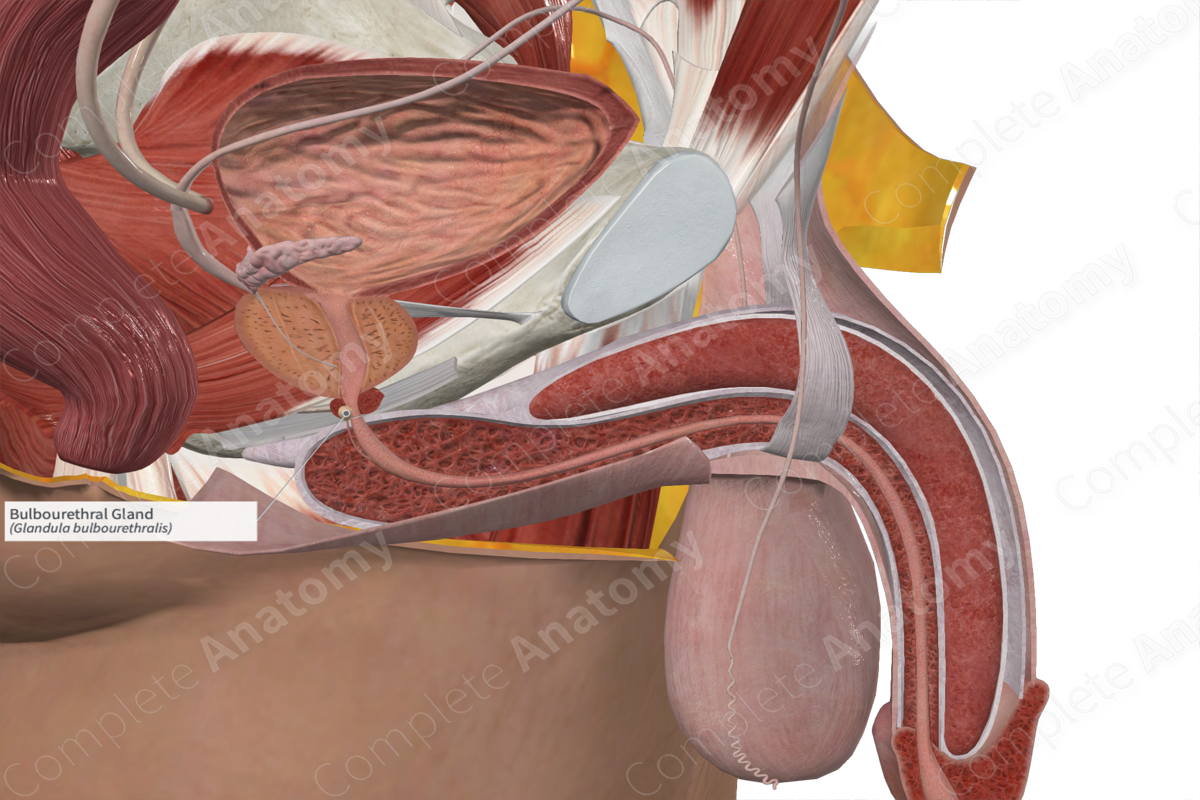
Quick Facts
Location: Deep perineal pouch.
Arterial Supply: Artery of bulb of penis.
Venous Drainage: Internal pudendal vein.
Innervation: Hypogastric nerve.
Lymphatic Drainage: Deep inguinal nodes.
Related parts of the anatomy
Structure/Morphology
The bulbourethral glands are pea sized, paired exocrine glands. They are lobulated structures measuring approximately 1 cm in diameter. They are drained by excretory ducts of approximately 3 cm long. They penetrate the perineal membrane and open into the urethra.
Anatomical Relations
The bulbourethral glands are in the deep pouch of the perineum, at the base of the penis, posterior and lateral to the membranous urethra, just below the prostate gland.
Function
The bulbourethral glands are responsible for the production and release of pre-ejaculate fluid that aids in the passage of sperm and neutralization of the pH in the vagina.
Arterial Supply
The bulbourethral glands are supplied by the artery to the bulb of the penis, which is a branch of the internal pudendal artery.
Venous Drainage
The Internal pudendal veins drain the bulbourethral gland.
Innervation
Autonomic nerve supply to the bulbourethral glands is by the hypogastric nerve.
Lymphatic Drainage
The lymphatic drainage of the bulbourethral gland is through the deep inguinal lymph nodes.
Learn more about this topic from other Elsevier products





